Kimber has built a reputation on 1911s, but in recent years, the gun maker has pushed into new territory.
This year, Kimber takes it further…bursting into one of the fastest growing, hottest segments in the gun market…the 2011.
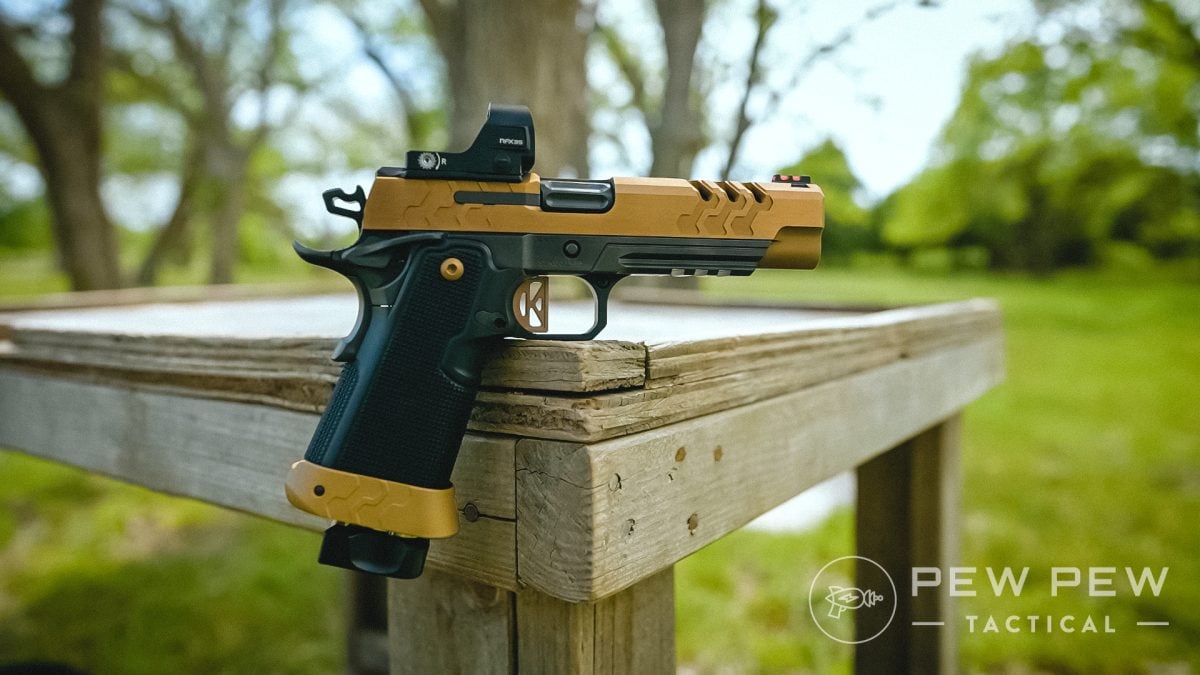
Kimber’s 2K11 Target, the company’s first 2011-style pistol, brings competition-grade performance out-of-the-box with head-turning looks and race-gun features.
But great 1911s don’t always translate into great 2011s. So we did what we do best and took this race horse to the range with 600 rounds to see what it could do.
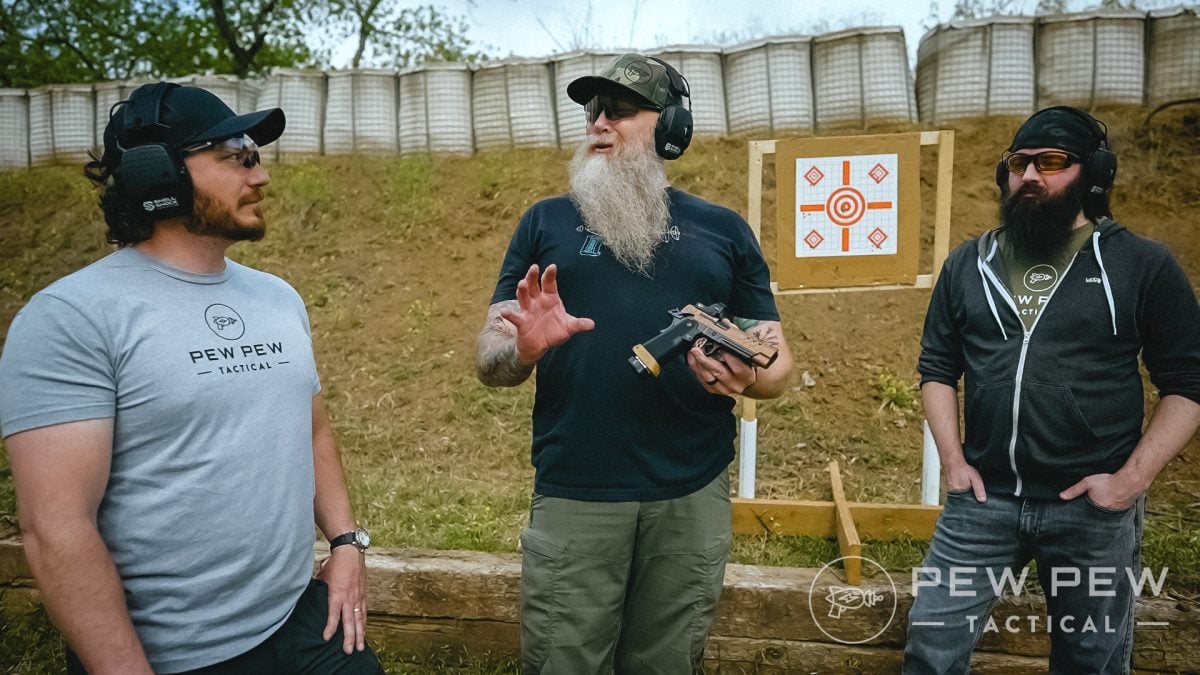
Table of Contents
Loading…
Prices accurate at time of writing
Prices accurate at time of writing
-
25% off all OAKLEY products - OAKLEY25
Copied! Visit Merchant
Kimber 2K11 Target Pros & Cons
Pros
- Flat shooter
- Excellent trigger
- Well balanced
Cons
- Expensive
- Undersprung or grip sensative
The Bottom Line
The Kimber 2K11 Target is a beautiful, but expensive, competition-ready gun that marks Kimber's bold entry in the double stack 1911 (2011) market. Ideal for competition, range work, or home defense — if you’ve got larger hands and a bigger budget, it’s definitely worth a serious look.
Specs & Features
Specs
- Country of Origin: USA
- Caliber: 9mm
- Action: Semi-auto
- Capacity: 20+1
- Length: 8.56”
- Barrel Length: 5”
- Width: 1.5”
- Height: 5.74”
- Weight: 42.3 oz.
- Comes with: Soft zippered case, 17-round magazine, (2) 20-round magazines, owner’s manual, C&H Precision optic plate, gun lock.
Features
- Toolless guide rod
- C&H Precision RMR optic plate
- Stan Chen Magwell
- TAG Precision fiber-optic sight
The 2K11 Target Origin Story
Kimber has long been known for its high-end 1911 firearms, but recently, the company has been branching out into other exciting areas previously untapped.
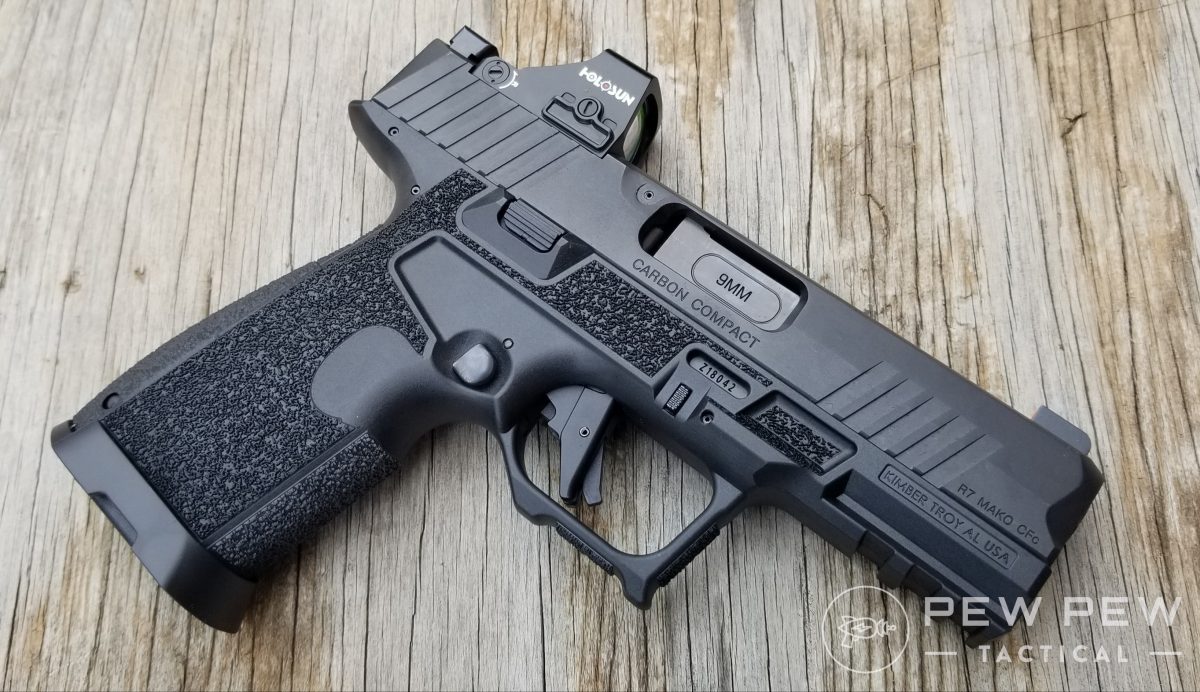
We reviewed the commander-like KDS9C a while back, but the R7 Mako really broke ground as their first polymer-framed, striker-fired handgun. Continuing in the competitive trend, it was only a matter of time before Kimber created its first double-stack 1911.
The 2K11 is the company’s first foray into this rapidly growing market, and Kimber understood the importance of a good first impression. With a very distinctive finish and upgraded features, the 2K11 seeks to give shooters competition-ready performance.
Range Testing the Kimber 2K11 Target (Performace + Accuracy)
Let’s dig into accuracy and performance at the range.
Immediately, I noticed that the 2K11 has a light and short trigger. I found it easy to release, to reset, and then break the next shot, racking up a string of hits in rapid succession.
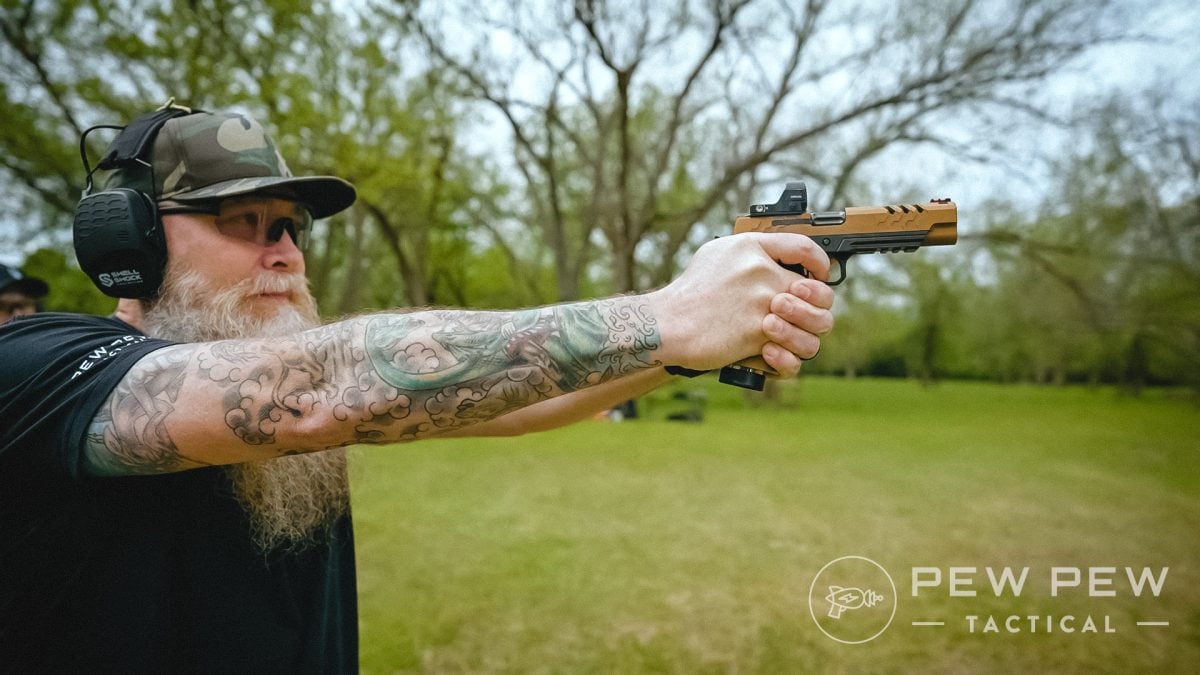
Right out of the gate, I could feel the balance and weight of the 2K11 working to help keep muzzle flip relatively tame. With a solid grip and stiff wrists, I was able to maintain my dot through recoil.
Slowing things down a bit, we used our video challenge to test the accuracy of the 2K11. Initial zeroing efforts were promising, with three round groups touching at 7 yards.
At 10 yards, we set up and fired 10 rounds of 115-grain AAC just to see how it would group. I went first, followed by Scott, and Wyatt closed out the group.
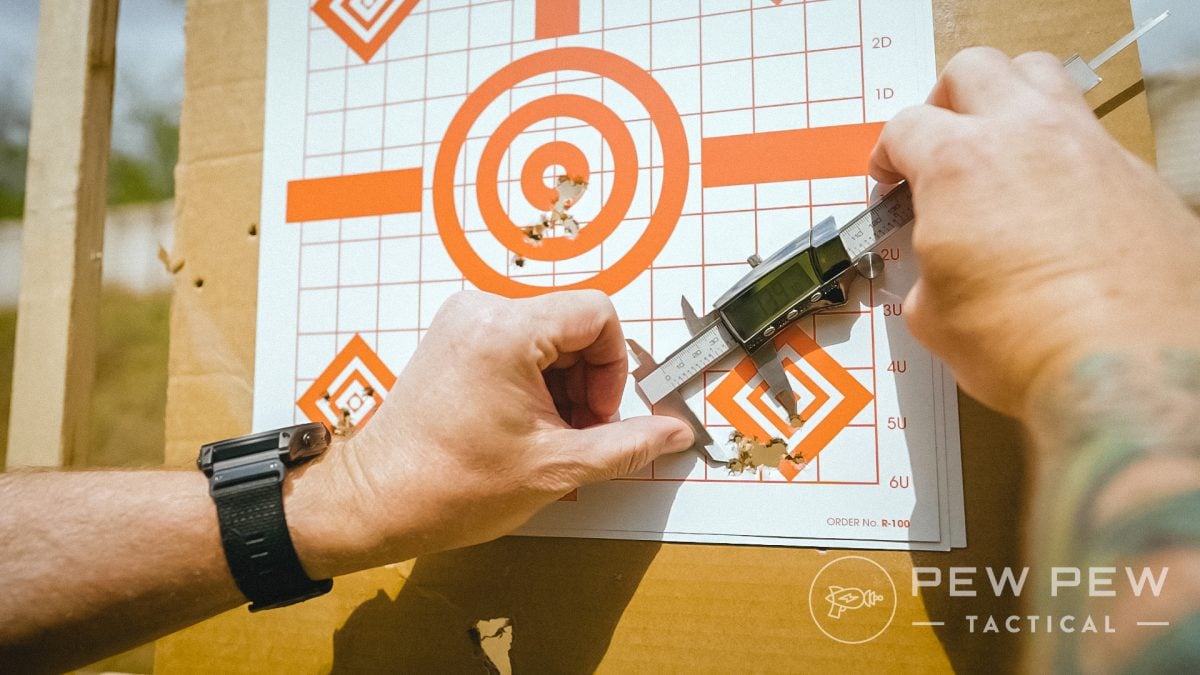
The results were encouraging. Scott’s group measured 1.39 inches, Wyatt’s group was 1.93 inches, and mine was 2.49 inches, including a dropped round. Overall, accuracy was good.
Reloads were a breeze thanks to the large magwell. As long as I was within a few degrees of the right angle, I could slam home the magazine and drop the slide for a fresh round.

Reliability was decent, though not perfect. So let’s break down what went wrong.
First up, I rode the slide stop at one point, which caused a failure to lock back. Admittedly, that was on me and not the fault of the gun. That said, you’ll want to be mindful of your hand placement so as not to repeat my mistake.
There were several instances where the slide did not completely return to battery, stopping just short. A simple tap returned the slide to position and corrected this, but that does take away from your ability to run it fast at times. Let’s be honest: If you’re spending $2,700 on a gun, you want to run well all the time.
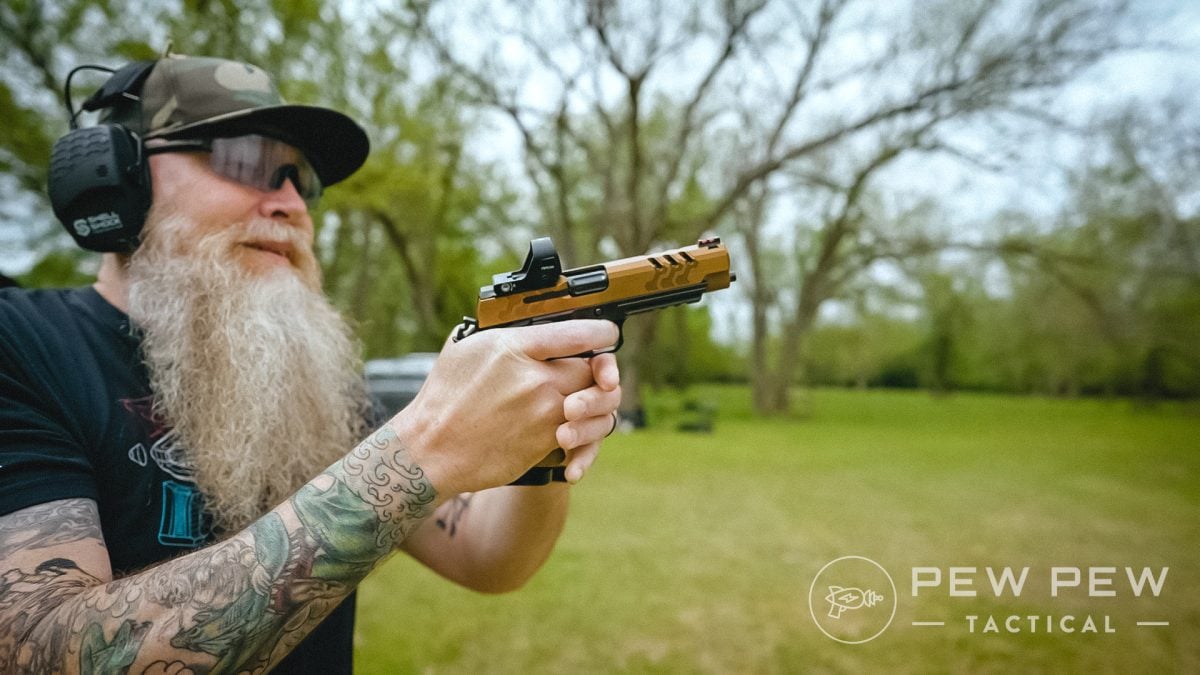
We wanted to give it a fair shake, so we ensured the 2K11 was well lubricated before beginning our review. We even lubed it again during testing for good measure. But that didn’t completely solve the issue. We still encountered times when the slide did not return to battery.
We then set out to see if it was user-induced…wrist limping or thumbs dragging the slide. (It’s not uncommon for my big hands to get in the way and cause issues like that from time to time.)
So I called in Wyatt, who has medium-sized hands, to test my theory. He gave it a try and did not drag the slide with his thumbs, yet the issue persisted. At that point, he suggested that the 2K11 Target might be a bit undersprung.
Editor’s Note: The team also brought a Staccato P and fired it during our range session. Though the P is from a different manufacturer, the controls are similar. It bears mentioning that the team did not encounter any of the issues they had in the 2K11 while firing the Staccato P — which likely rules out operator error.
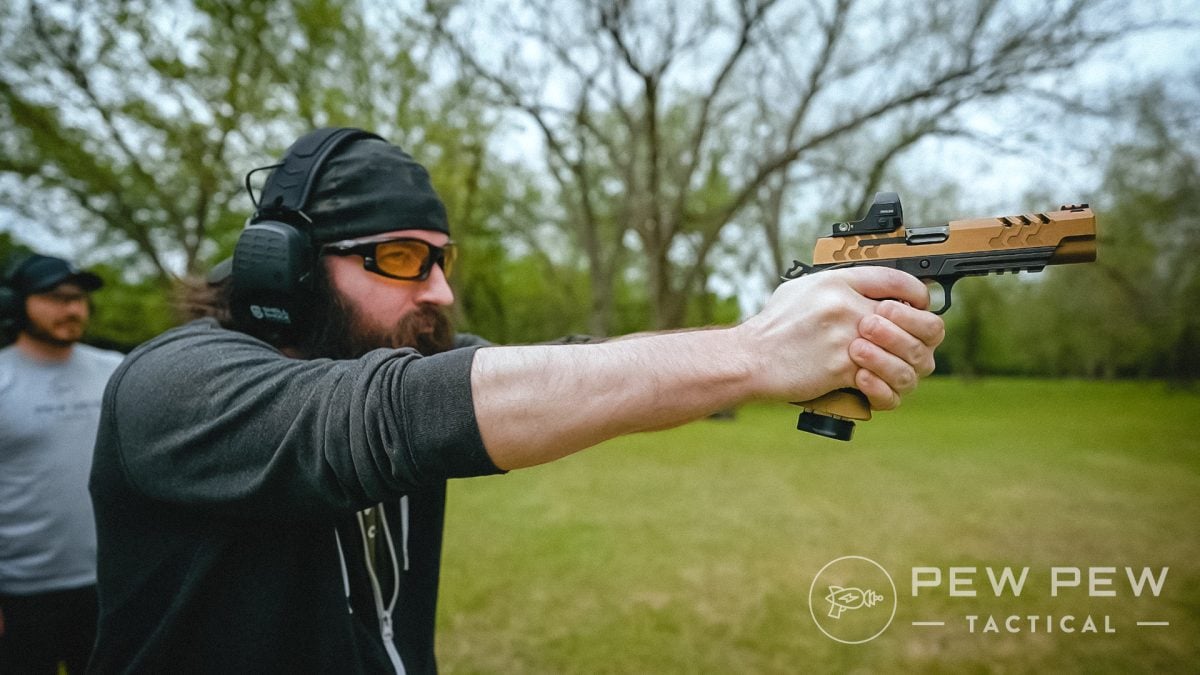
The following week, I returned to the Pew Pew Tactical Range to test the 2K11 again. With my thumbs tucked neatly away, I fired an additional 120 rounds of AAC 115-grain.
This time, I didn’t have any issues with the gun not returning to battery like before. It wasn’t all sunshine, though, as I did experience a malfunction. This time, the external extractor got caught on a fresh round and would not go into battery. To fix it, I racked the slide to clear the round.
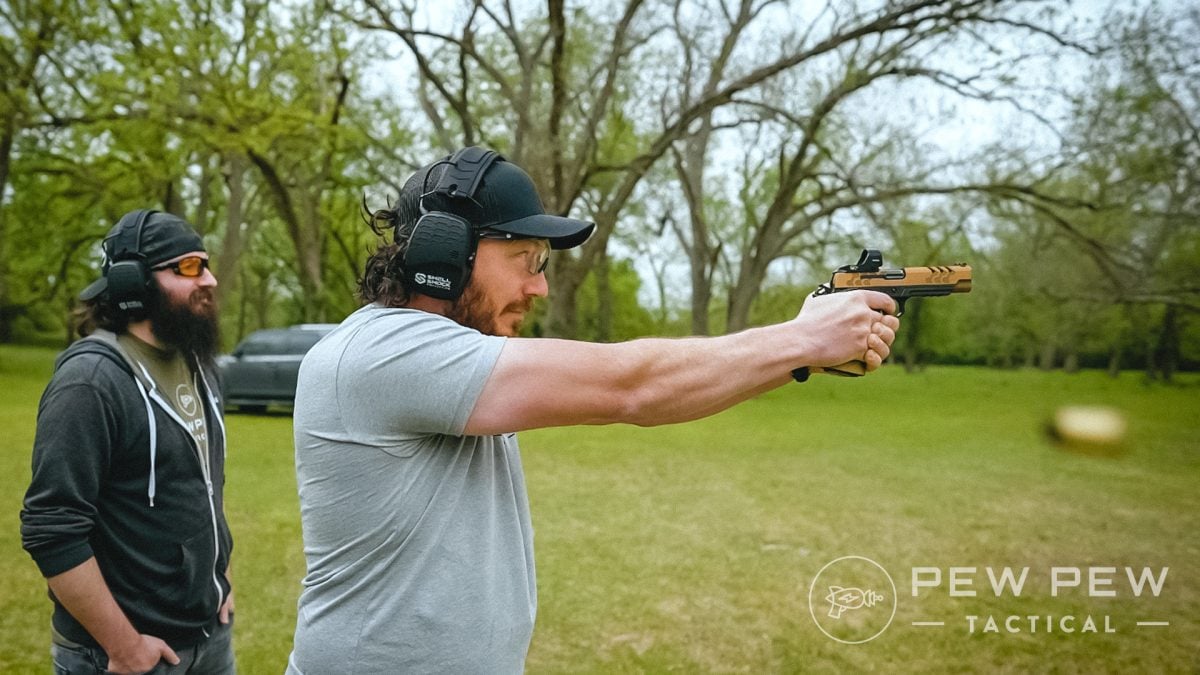
During the prior week’s testing, Wyatt evaluated the 2K11 using a looser grip to see how it handled. It did show similar issues with the extractor. It’s entirely possible there is a correlation between the two issues we experienced.
Barring these issues, we had no other problems arise during testing, which consisted of over 620 rounds.
9mm Ammo in Stock
Ergonomics: Fit & Feel

The first thing I noticed when picking up the 2K11 is the girth and heft — it’s a beefy gun. Its frame is aluminum, and the slide is steel, though there is remarkable balance with only a slight tip toward the muzzle.
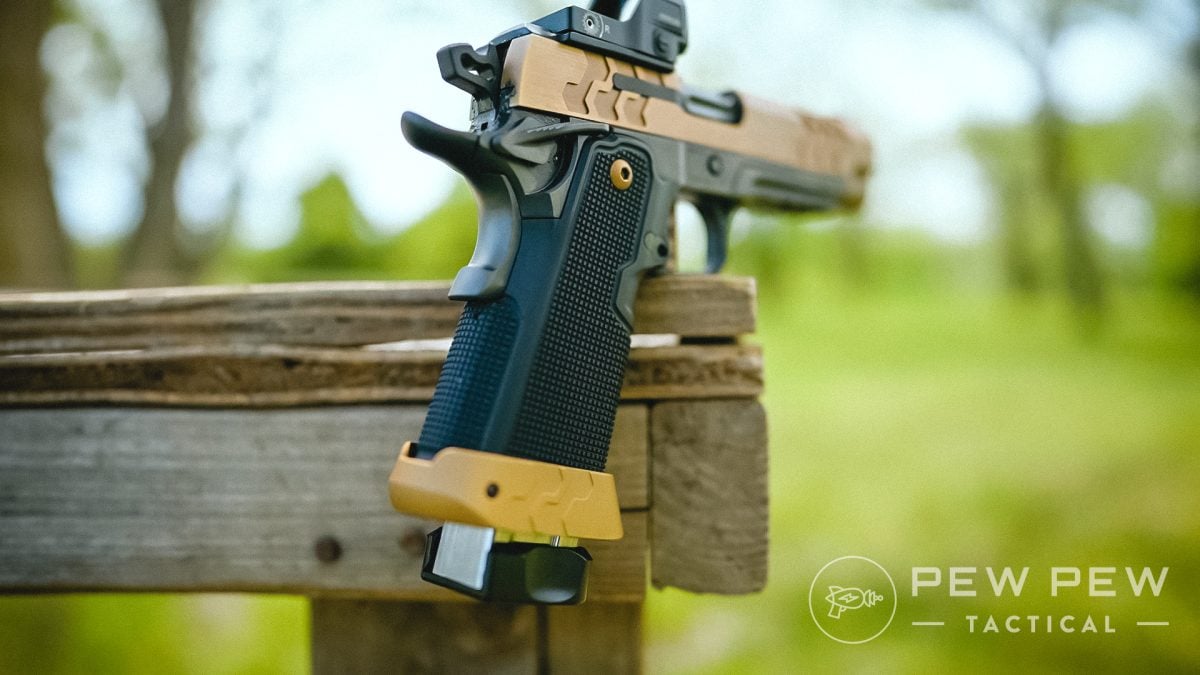
As mentioned, the grip is wide to accommodate the double-stack 9mm magazines, a feature common to all 2011s. (Editor’s Note: Wyatt confirmed the Kimber 2K11 can use Staccato-pattern magazines.)
My 2X-sized hand absolutely relishes grips this size, though I recognize smaller-handed shooters may have some issues with them.
Texturing on the grip is checkered and milder, though it’s still effective. I would call it a medium texture compared with something extremely aggressive like the Staccato P.
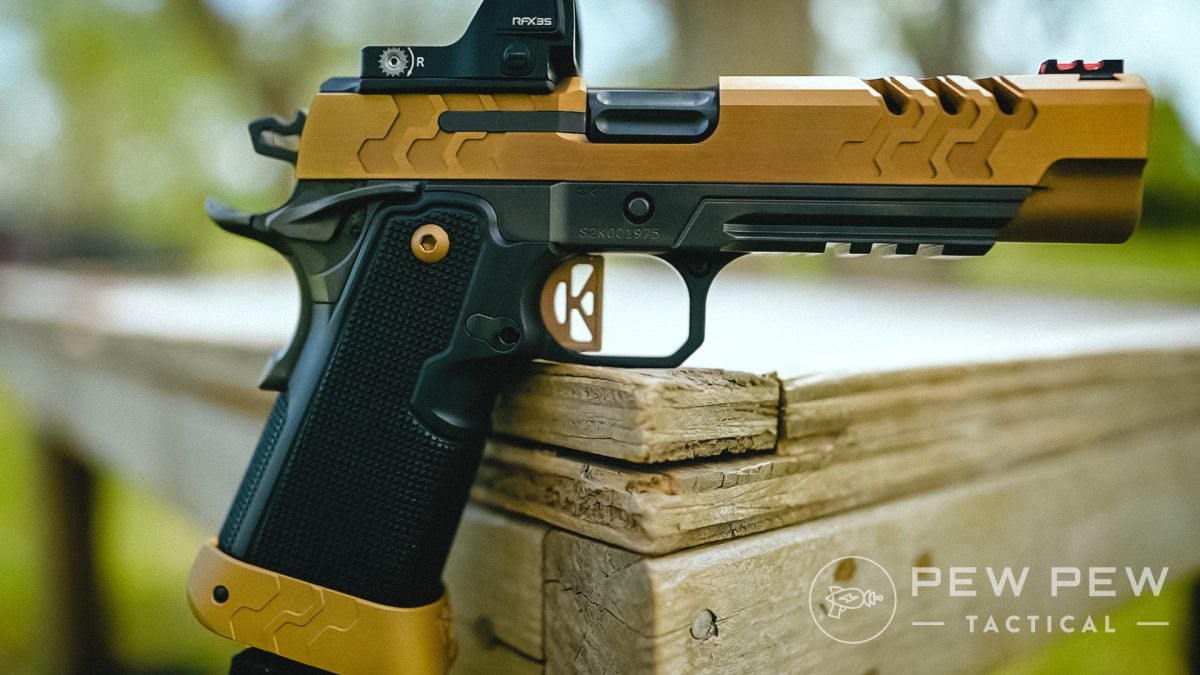
There isn’t an undercut present at the trigger guard, though Kimber left off texturing for the shooter’s middle finger. This helps indexing as well as cutting down on wear and tear on the finger.
Overall, the ergonomics feel very good (for big hands). The 2K11 sits well in my hand and points very naturally. Its beavertail covers the web of the hand extremely well.
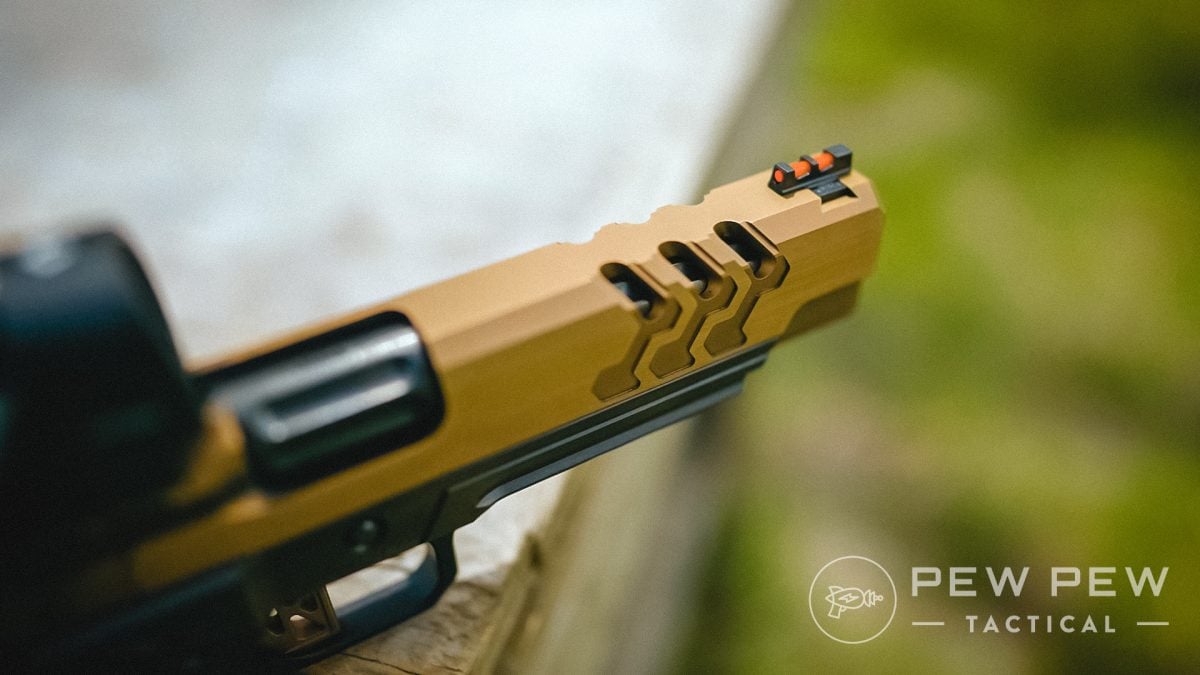
Slide serrations on the rear are cut in an interesting pattern and are adequate to the task, though the front ones are different. Along the sides they are the same though over the top they cut all the way through the slide, revealing the barrel.
The barrel is fluted, ramped, and covered in a black DLC finish. The total package is a striking balance between copper and black.
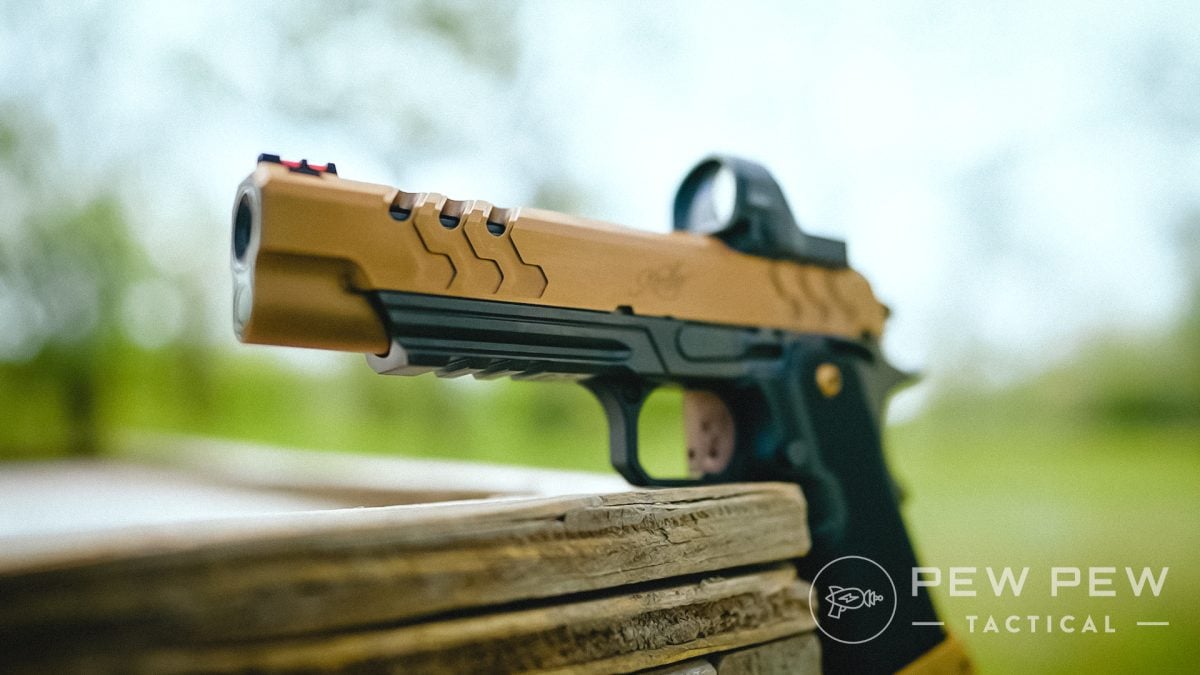
Fit and finish are extremely nice with black making up the majority, while the slide, trigger, grip screw, and magwell wear copper. This craftsmanship is echoed in how smoothly the slide moves along the frame.
The 2K11 ships with three Check-Mate Magazines (17-round flush fit and two 20-round extended magazines). All three locked back, inserted cleanly, and dropped freely when I pressed the release.
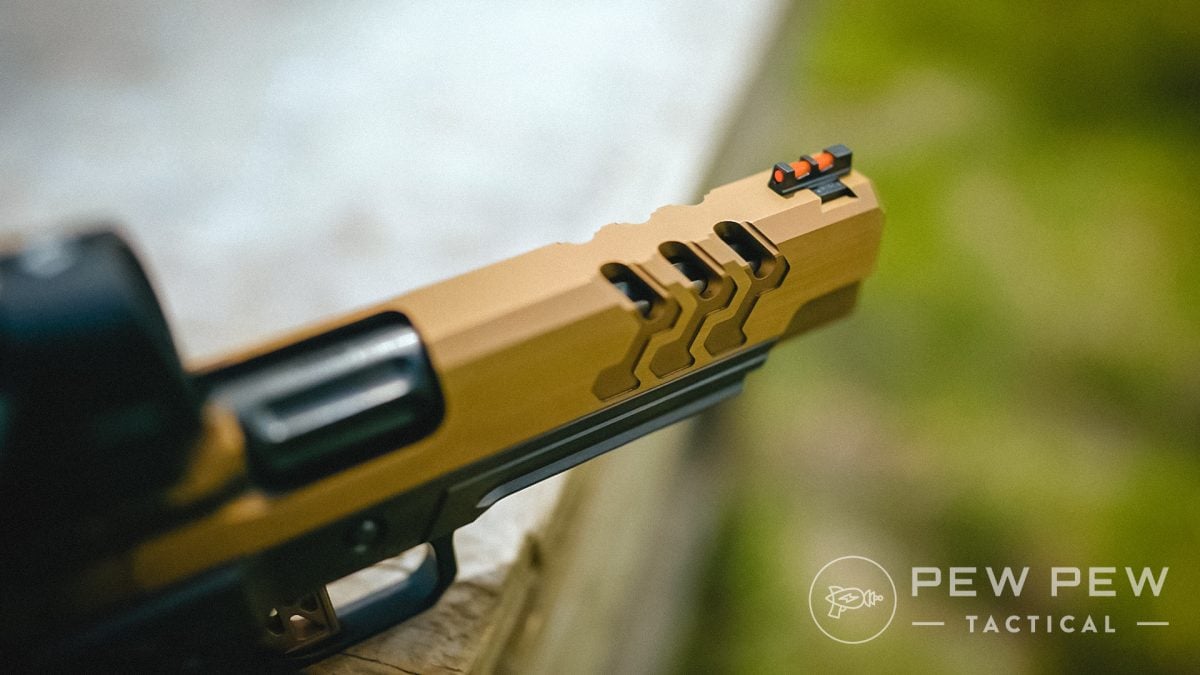
Reloads were assisted by the enormous magwell from Stan Chen, a gunshop specializing in custom 1911s. If I got the mag arguably close to the right angle, it was guided in.
While we shot with the green dot from Viridian for the test, the sights on the 2K11 are impressive. The front is a user-serviceable/changeable red fiber optic from Tag Precision, and the rear is a precision adjustable model that must be removed to install the optic plate.
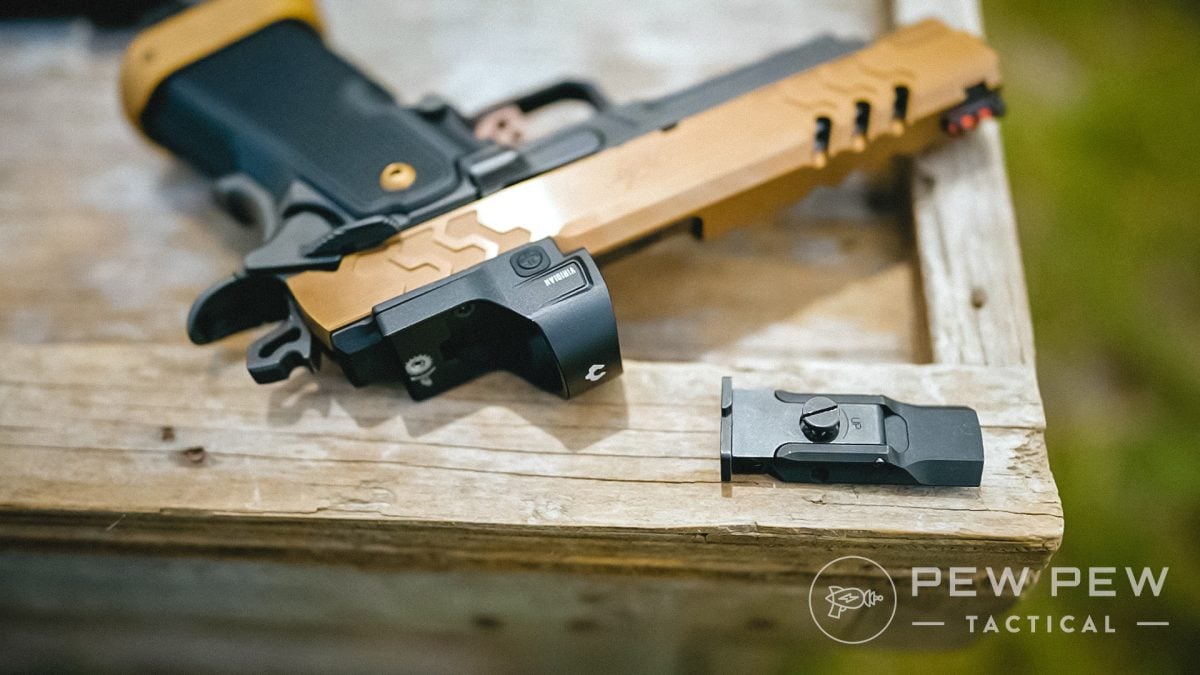
Controls
The trigger is a straight pull-back design with a flat bow. The distance from the grip safety to the front of the trigger is fairly long.
Again, it’s great for my large hands, and I found myself using the pad of the tip of my finger to press. Wyatt and Scott still found it okay, but made note of the length.
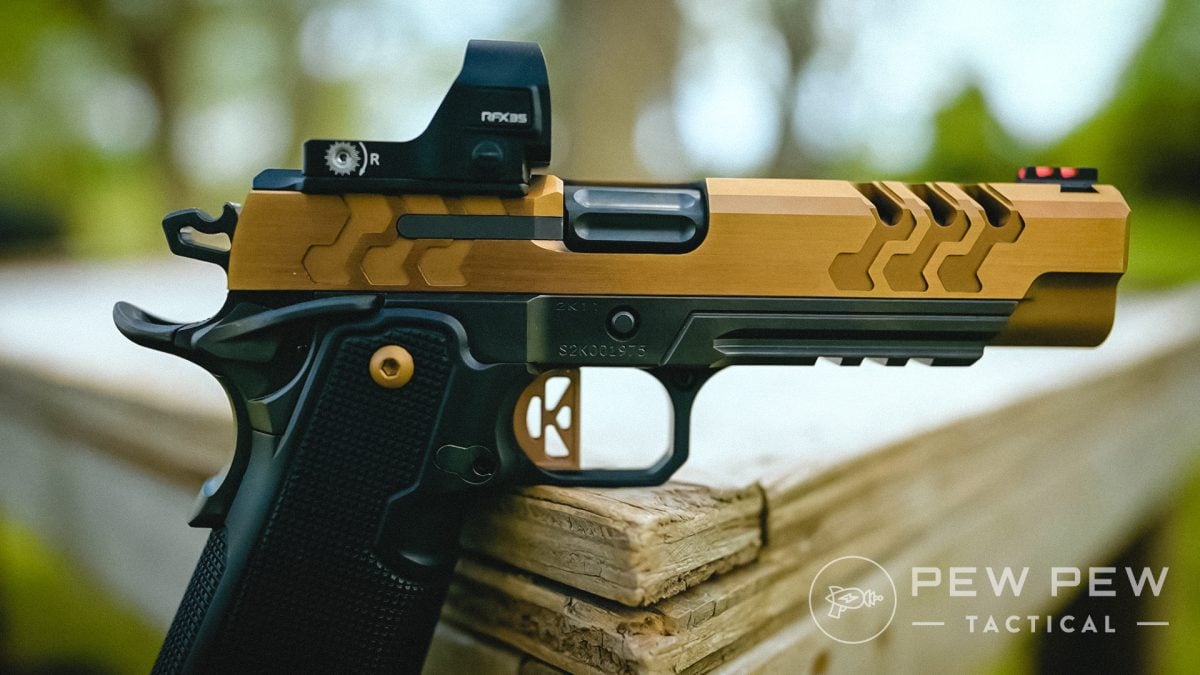
During trigger press, there is perhaps a millimeter of travel before quickly hitting a defined wall. At 2.7 lbs. on a Lyman Digital gauge, the trigger breaks crisply. Reset was audible and tactile.
The safety on the 2K11 is ambidextrous though the right side is thinner and longer. Both were easy to access with the appropriate hand.
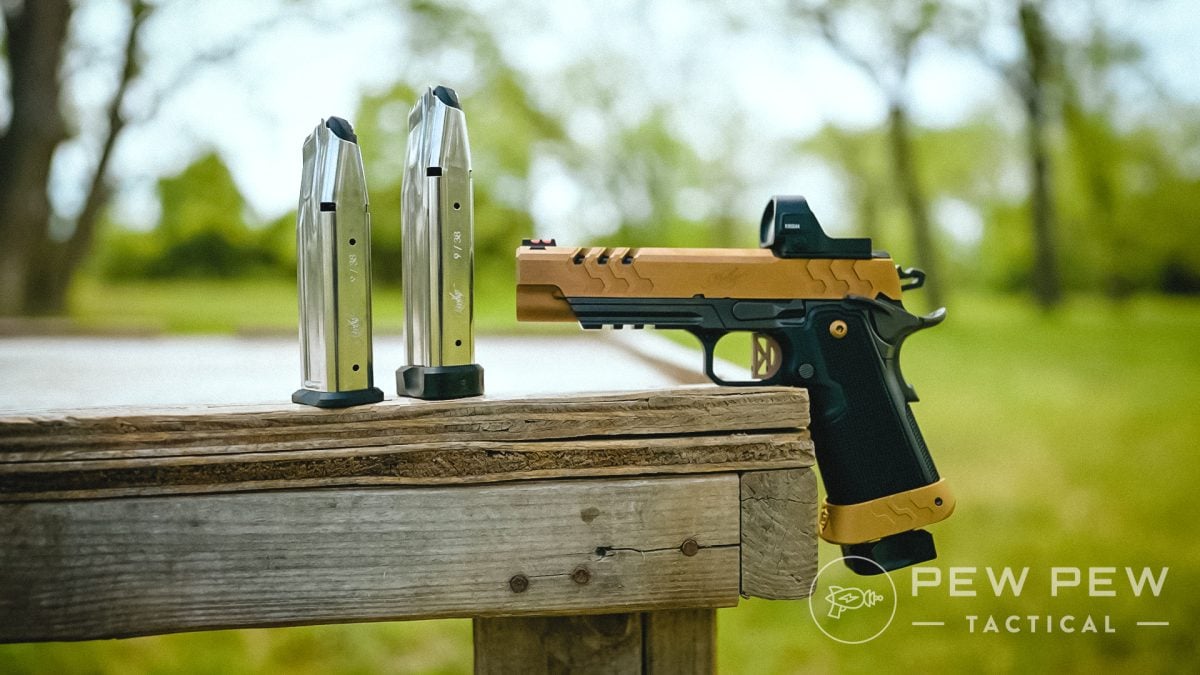
I could not press the magazine release in my master grip, but that is not uncommon for 2011s. The button itself is round and covered with the same squared texture as the grip.
Its slide stop/release was similar to most 1911/2011 models, tucked along the slide. I used my support hand thumb to activate it during reloads and could access it easily.
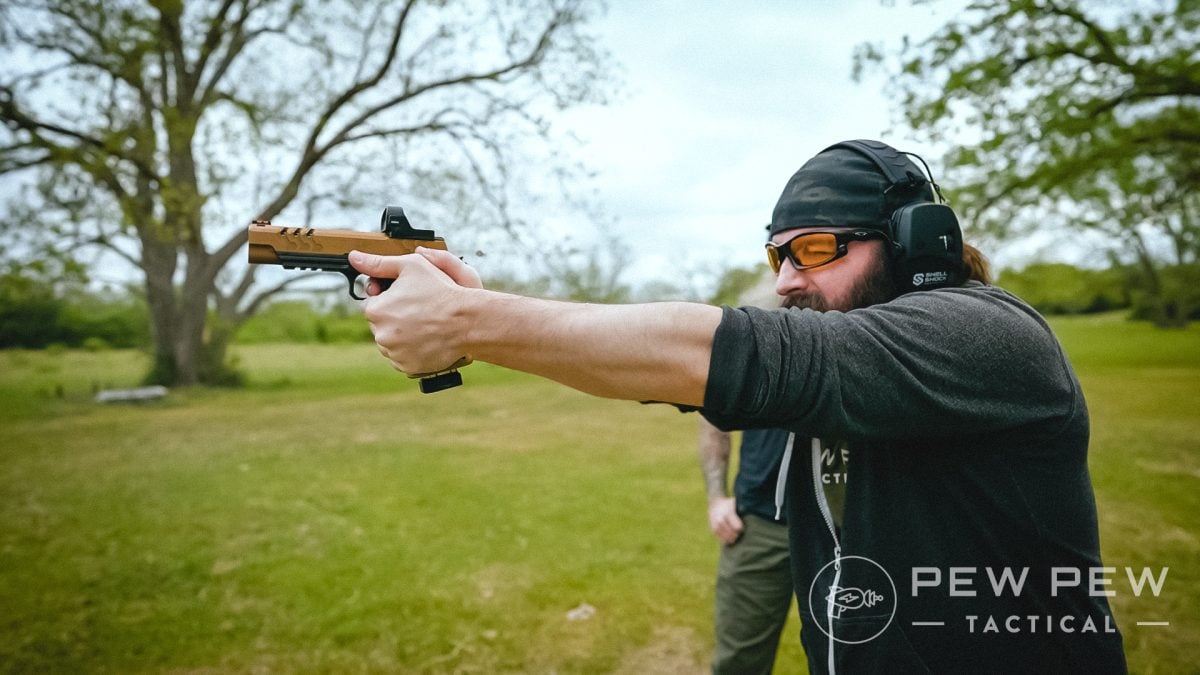
Who Is the Kimber 2K11 Target For?
The Kimber 2K11 is a fine example of a 2011, blending high capacity with the excellent trigger and hammer-fired accuracy of its predecessor, the 1911. This one is upgraded in the fashion of a race gun, so it’s competition-ready.
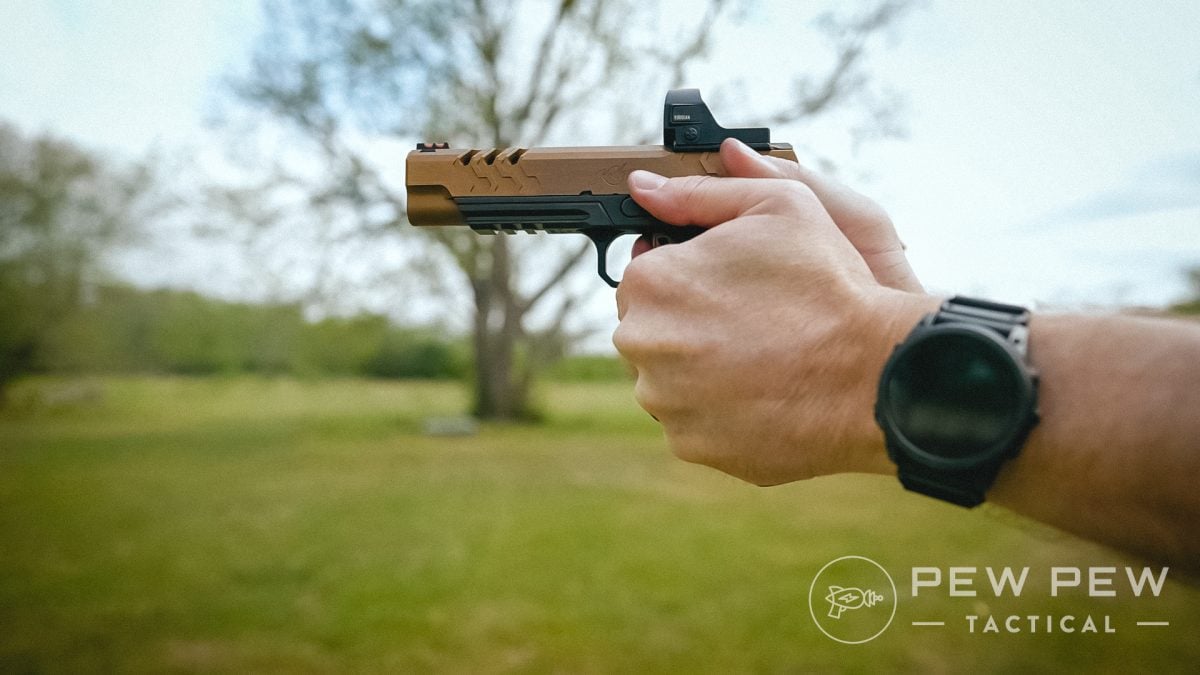
Even among 2011s, the 2K11 Target is distinctive based on its color scheme. Pretty guns aren’t really a flex to me, but they sure don’t hurt anything.
Let’s be up front about it, this pistol retails a little under $3K, so casual shooters are not going to be the target audience. The gun is also a little too large and heavy for concealed carry work.
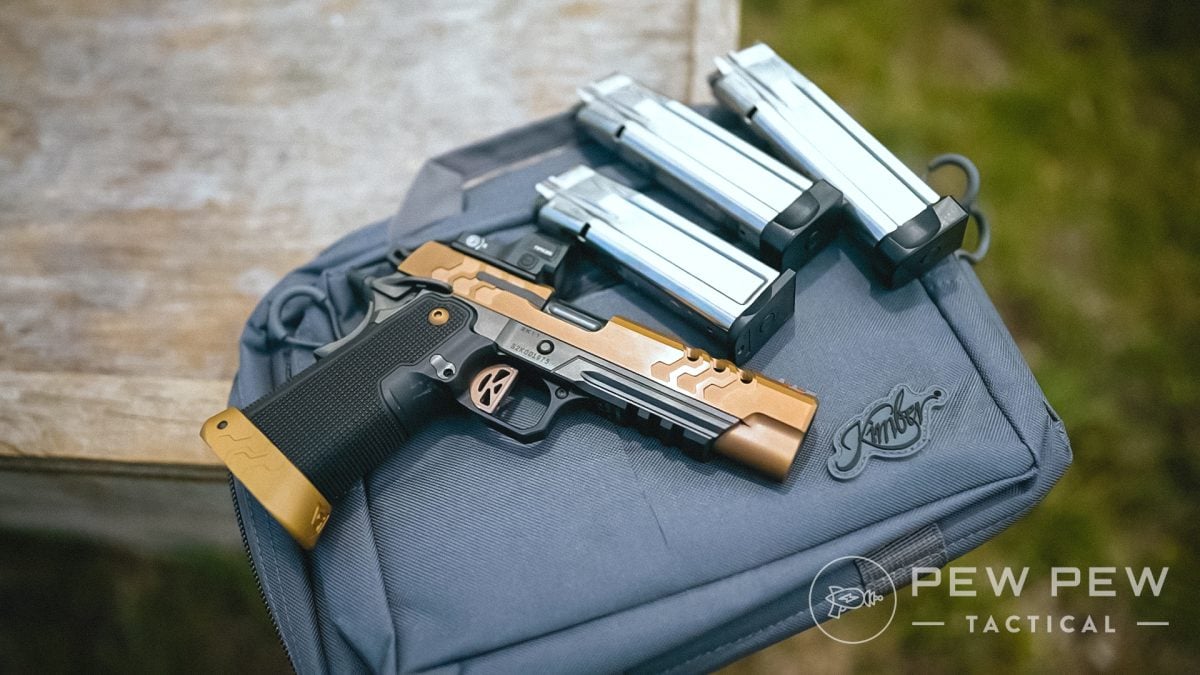
However, in capacity and sheer performance, the 2K11 shines, making it a solid contender for competition-style shooting. Also, fans of Kimber, or 2011s in general, will definitely want to check out this model.
In addition, the 2K11 would be suitable for roles such as home and vehicle defense or even law enforcement.
By the Numbers
Reliability: 3/5
The 2K11 was very reliable, though we did experience a few out-of-battery issues that may have been caused by the recoil spring or light grip.
Ergonomics: 4/5
I really enjoy the ergonomics of the 2K11 in general, but I have large hands. Smaller-handed shooters may need to adapt techniques to make it work.
Accuracy: 5/5
With such a clean, light trigger break, it’s easy to stack up impressive accuracy with this pistol.
Customization: 3.5/5
With the 2011 fans continuing to receive more options, the aftermarket support is growing too. There are already holster options available for the 2K11, and you can mount up optics or other accessories on the rail. In addition, shooters can select from different colors (stainless, coyote, or black), optics-ready, optics-included, iron sights, and even 9mm or .45 cal. models.
Value: 3.5/5
With an MSRP of $2,699, the 2K11 is EXPENSIVE. But…the performance is impressive. Actual street prices appear to be around $2,500. This is actually competitive for the field, which starts around $1,500.
Overall: 3.5/5
Prices accurate at time of writing
Prices accurate at time of writing
-
25% off all OAKLEY products - OAKLEY25
Copied! Visit Merchant
Kimber 2K11 Target Upgrades & Accessories
I’m a big fan of shooting red dots these days because of the target focus they can teach shooters. The RFX-35 from Viridian is a competition-sized dot, and it’s bright green!
Prices accurate at time of writing
Prices accurate at time of writing
-
25% off all OAKLEY products - OAKLEY25
Copied! Visit Merchant
You’ll want to spend some time practicing before you hit the next competition and AAC provides an affordable and reliable means to do it.
Prices accurate at time of writing
Prices accurate at time of writing
-
25% off all OAKLEY products - OAKLEY25
Copied! Visit Merchant
Finally, you’ll want some top-end ear and eye pro for your competitive edge. ShellShock Protection are all-day wearable and won’t let you miss any range commands.
Prices accurate at time of writing
Prices accurate at time of writing
-
25% off all OAKLEY products - OAKLEY25
Copied! Visit Merchant
FAQs
How much is the Kimber 2K11?
The 2K11 Target comes with a hefty price tag of around $2,700.
How many rounds can the 2K11 Target hold?
Kimber's 2K11 Target has a 17-round or 20-round capacity, depending on magazine.
Does the Kimber 2K11 Target accept Staccato magazines?
Yes! It is compatible with Staccato magazines.
How We Tested Kimber 2K11 Target
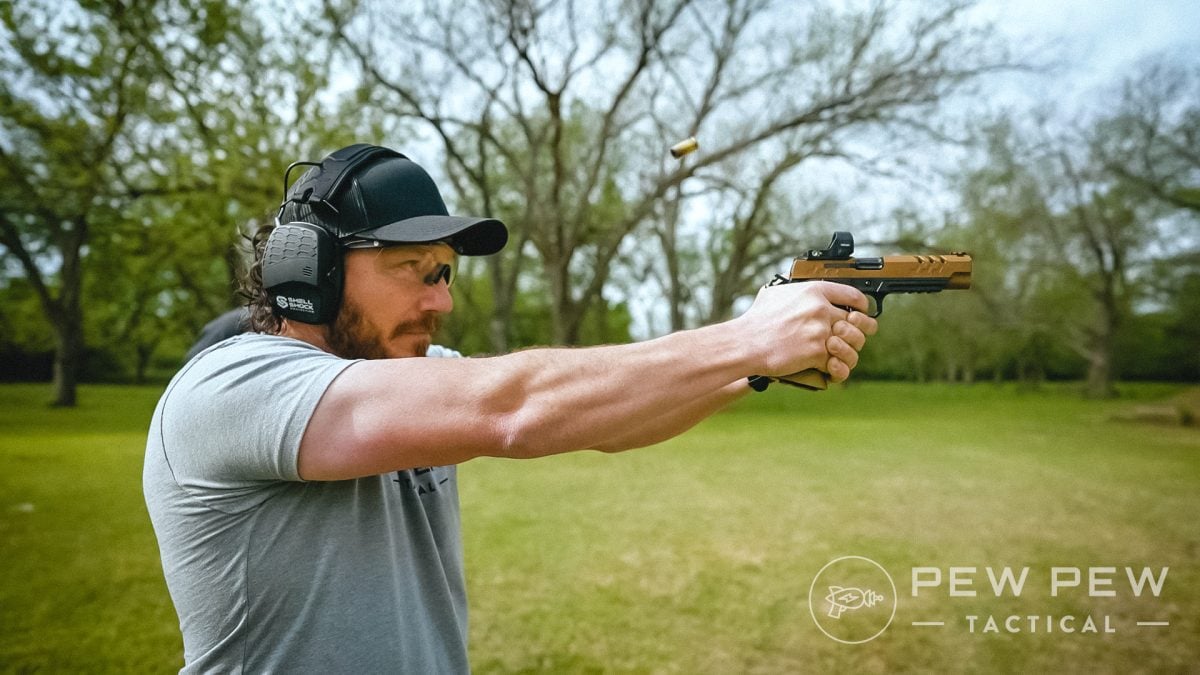
For this review, three shooters tested the Kimber 2K11 Target with a Viridian RFX 35 green dot, shooting 10-round groups from 10 to 50 yards and a variety of speeds to assess accuracy, reliability, and the gun’s ability to handle both slow and fast firing rates.
We went through 620 rounds of ammunition, using both practice ammo and defensive ammo:
- AAC 115gr FMJ
- Federal Premium, 124gr HST
We also tested the trigger on the Kimber 2K11 Target with a Lyman Digital Trigger gauge to accurately assess the actual trigger pull weight. Finally, we ran the Kimber 2K11 Target with all three magazines included in the box.
We concluded our testing with a challenge of accuracy. (Make sure to watch the video at the top of the review to see who won!)
Meet the Experts
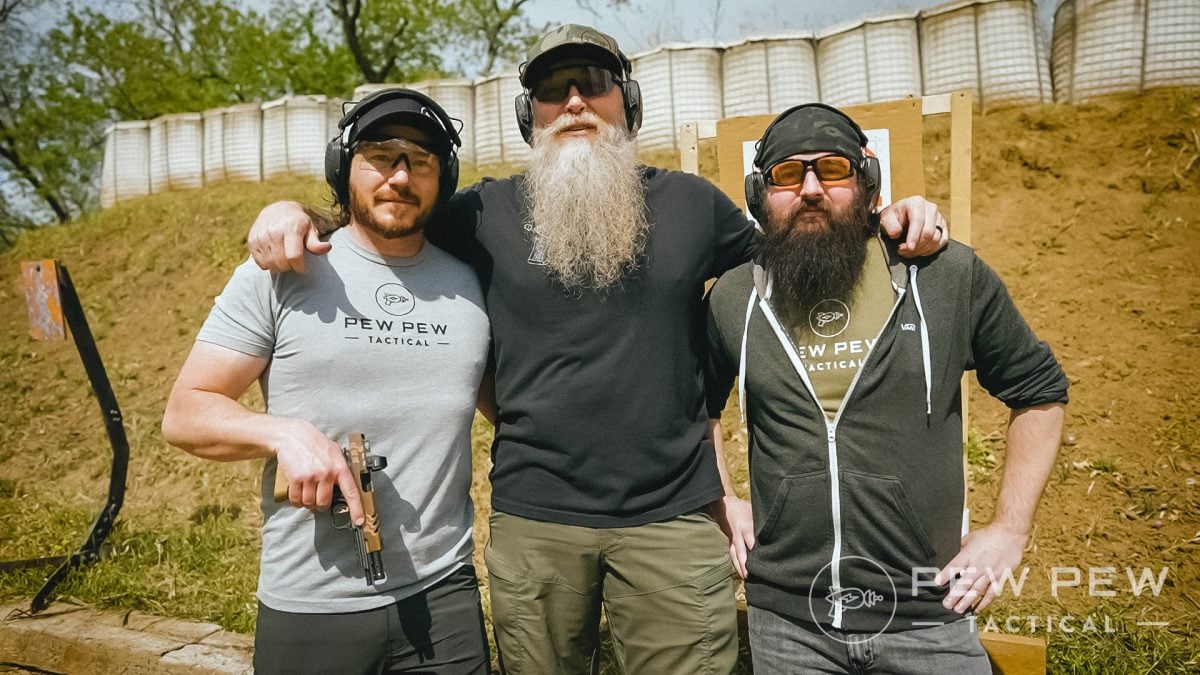
At the helm of this review is Pew Pew Tactical Content Producer Sean Curtis. Sean spent over two decades in law enforcement, where he became a POST-certified handgun instructor and NLEFIA Red Dot Instructor and received CLEFIA Advanced Firearms Instructor Training and AR-15 armorer training. He has since attended a variety of training, including Tactical Performance Center Handgun Mastery & Carbine Mastery, and earned USCCA rifle instructor certification. Aside from training and prior to joining the Pew Pew Tactical team full-time, Sean wrote for several gun publications, evaluating and testing guns and gear, and has written hundreds of articles.
Pew Pew Tactical Editors Wyatt Sloan and Scott Murdock contributed to this review as well.
This review was edited by Editor-in-Chief Jacki Billings, who runs Pew Pew Tactical’s experienced team of reviewers. Jacki is a member of the Society of Professional Journalists, ACES: Society for Editing, and the Professional Outdoor Media Association and has her bachelor’s degree in Mass Communications. She has worked as a media professional for close to 20 years, specializing in gun media for almost 10 years, and has worked as an editor for five years. She uses her extensive professional journalism and editing experience to set testing protocols and editorial standards.
Kimber 2K11 Target Final Verdict
Having carried a Kimber on duty many years ago, I can attest to their quality. The 2K11 does a fine job of keeping within that tradition while providing all the advancements of the 2011 platform.
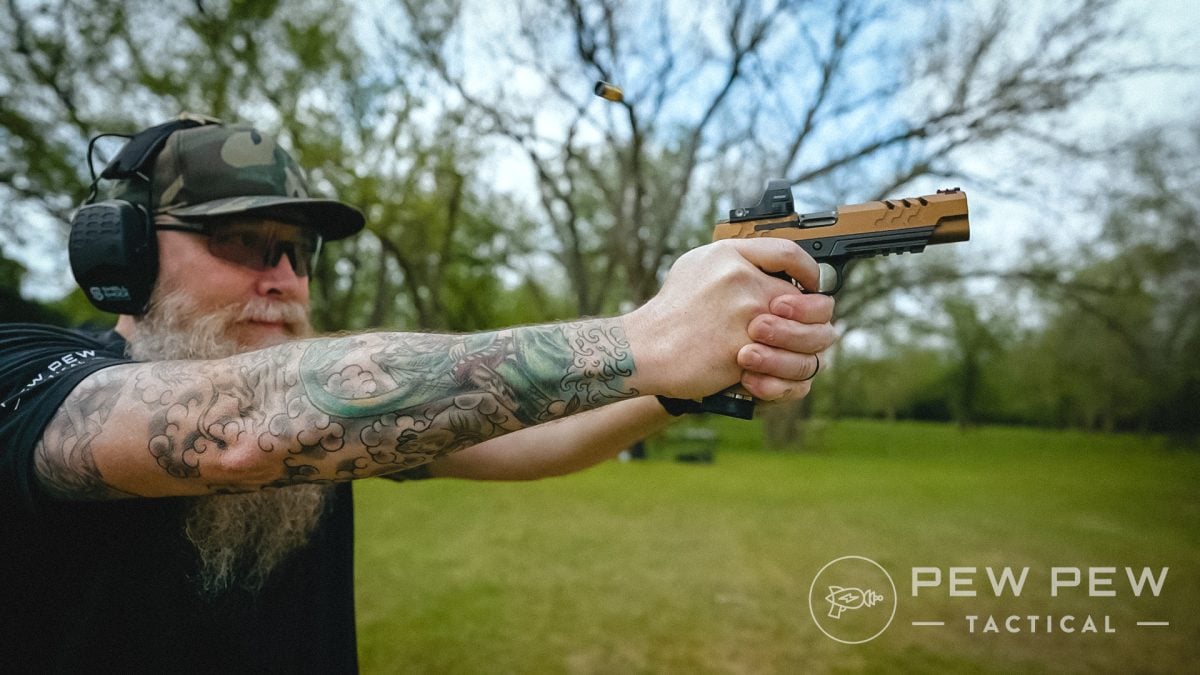
It is expensive, but nice things usually are. If you want to shoot fast and accurately, and have the money to spend, the 2K11 is a great option for you.
Is $2,700 too much for this 2011? Let us know if you would drop that much on the Kimber 2K11 in the comments below. If you’re looking for another solid 2011 option, check out our review on the Staccato P










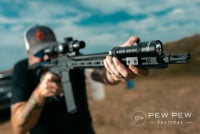



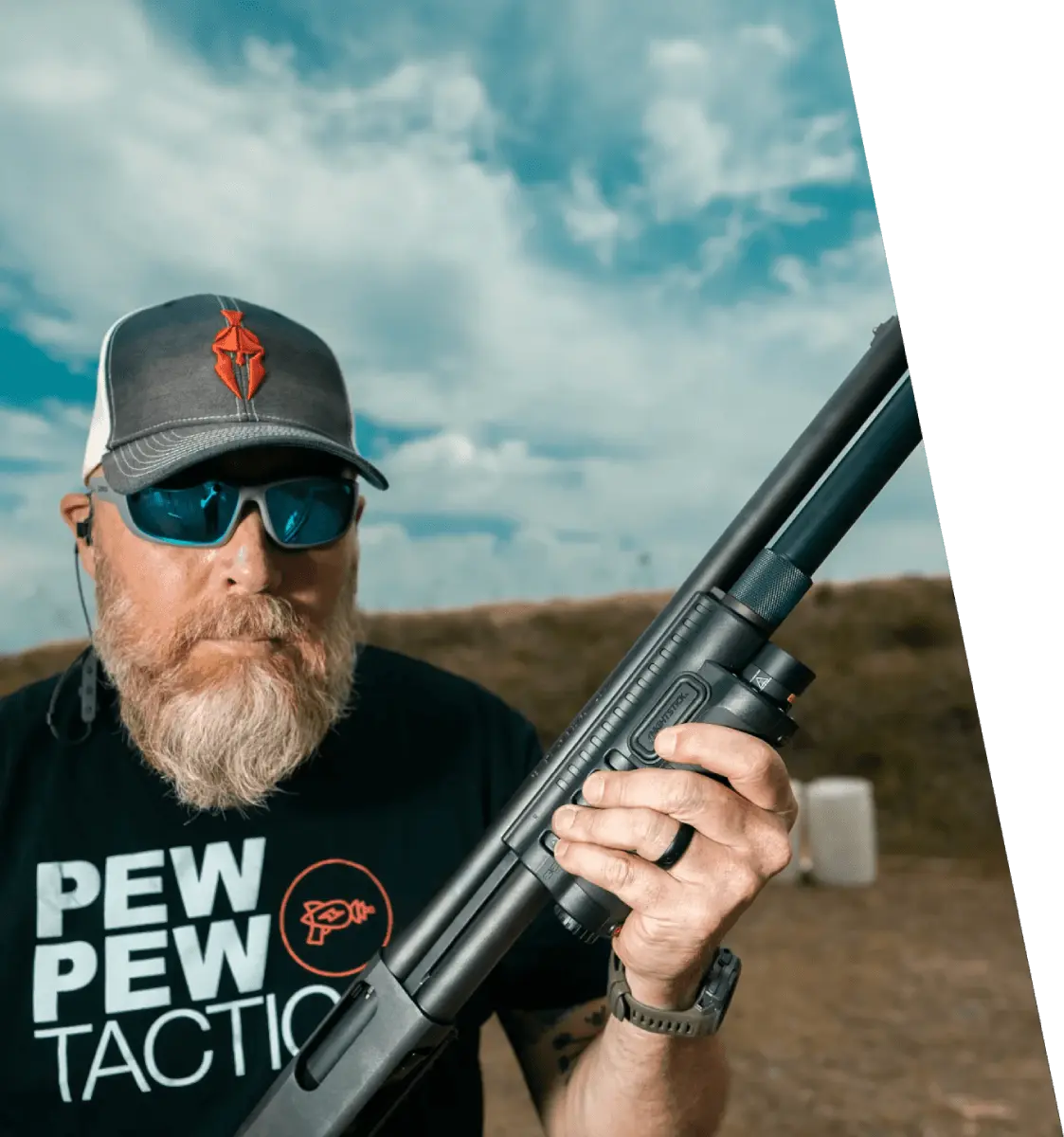

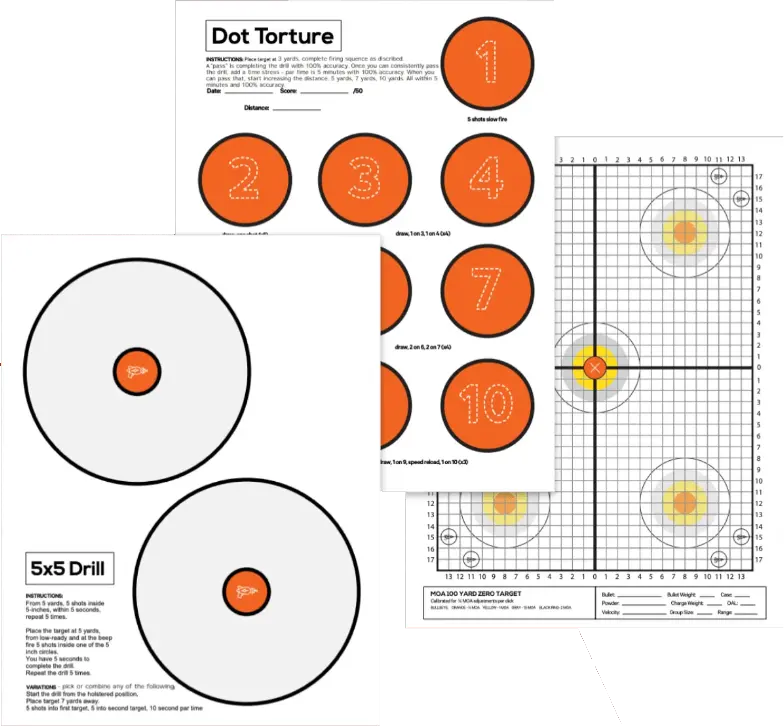
22 Leave a Reply
Regarding your failure to return to bettery, my new 2K11 had the same problem as well as a recently purchased Kimber KDS9c. Sent the KDS9c back to Kimber for warranty work, it still came back with the same problem.
After looking both guns over very carefully, I found the source of the problem. The firing pin retainer plate is too-long and creates a ledge that hangs up on the ejector. I filed both these down, and the problem was quickly solved.
I uploaded a short video to Youtube showing the problem (search "Kimber KDS9c Failure to Battery")
I'm baffled I could figure this out, but Kimber coudn't? Clearly, the firing pin retainer plate is out of spec, and Kimber has put bad ones into at least 2 1911-like firearms I've purchased in the last 6 month.
Hey Joe,
Thanks for sharing your experience and solution! I forwarded your thoughts on to Kimber for consideration.
I'll add some back story to my experience's. I had a custom "race gun" built back in the day, when I going to about three matches a week. Thought I had it all for open class, 38 Super for major power (before the power factor was lowered and 9mm major was a thing), custom comp on a bull barrel Wilson barrel, red dot aimpoint that attached to the frame (yes, before slide mounted red dots), custom slide with slab cuts the works! Did very well with it knocking on master class. Then about a year or so later double stack Caspian frames etc. started showing up... Couldn't compete with my 10 rd mags needless to say it sucked!
Thanks for sharing! It's interesting to see the evolution. When I started in law enforcement, most agencies were already switched to semi-autos, though there were a few holdouts. The changes I've seen in the following decades in both gun and ammo technology have been fascinating.
Maybe lucky. Complaints about Kimber QC abound. They look nice but quality seems to be hit and miss. You may get a good one or send it back for repair 3x. Most single stack competitors tune the heck out of their pistols or have custom builds. I always ask about their set ups .
True enough. I've had good experience with Kimber though I know there are others who have not.
In the period of my life right now, I have a ultra lite II as my CC , typically I’m a 9mm guy, but when I was exposed to the Kimber line, I fell in awe of them. Then after shooting. And experiencing the different stages of the Kimber as it worked itself into a very reliable CC platform. But again the need for top level shooting pistol for EDC is really an overkill unless your John Wick. But I’m sure it well worth every penny as I’m more than satisfied with my Ultra II . BTW I am an open sight guy, and can only say on the market there are many that would work better if needed, but again that a personal choice of the shooter.
Thanks for the read and chiming in Robert. I carried a Kimber Warrior on duty as a younger man and had experienced great reliability and impressive accuracy from it. I'm glad your experiences led you to the same conclusion.
I use a mostly stock, (it does have a fiber optic front sight and a custom magwell) Kimber gold match for USPSA single stack division and besides running a couple of mags through it to break it in, I have yet to have any problems with it, no failures to function whatsoever with factory ammo or with my (vast majority of) handloads. This replaced a Colt Gold cup 70 series I used that had to many problems/issues with. Did I get lucky with the Kimber or unlucky with the Colt? Damned if I know.
Ha! Thanks for the read and your response. As mentioned elsewhere, I carried a Warrior on duty many years ago and really enjoyed it. I too upgraded, though my previous ride was a Government Model. I had great experiences with my Kimber.
I had a couple of Kimber 1911 years ago. Failure to go into battery and stovepiping where common. Even had a good gunsmith tune both of them, still didn't run. I'll stick with my Staccato's, never had 1 failure over 3 pistols and several thousand rounds.
Thanks for the read and the share. I finally had to put my Kimber down when I switched agencies and was forced to shoot at an indoor range that required frangible ammo. It simply wouldn't cycle that stuff. Absolutely love my Kimber though!
I've shot 4 or 5 different Kimber pistols over the years (belonging to friends and family) everyone of them has had failures to feed, eject or go into battery (tested with different ammo etc.) I have had good luck with their rifles however.
Thanks Steve. I've definitely seen them be very finicky about what they would cycle. I don't know that I can fault a century old gun design for that, but there certainly are modern options.
Head-turning?
Really?
A Kimber?
Beauty is most certainly in the eye of the beholder Chris. Thanks for the read.
HMM I have had three Kimbers...expensive, ate only expensive higher power stuff. JUUUST not worth risking my life over Sorry
I've got no arguments with this. My experience with Kimber was very positive though I found the reliability depended on the ammo.
I had a Kimber PRO Carry II many years ago. It was a tack-driver and very reliable.
I've attended many classes, taught at regional conferences, and overall it is inevitably the 1911 style pistols that malfunction far greater than others.
1911's are fun to shoot, but if I had to carry a handgun for protection, they would not be my first choice.
I hear you Erik, and agree.
I had a similar experience with failure to return to battery with new Canik TTI Combat using Winchester 115 grain FMJ. I switched to Winchester 124 grain NATO and the problem went away after about 500 rounds.
Thanks for sharing Mike. So many times, there is an initial break-in period that needs to be finished before you can really determine how the firearm is truly going to perform. Ammo selection is often key.